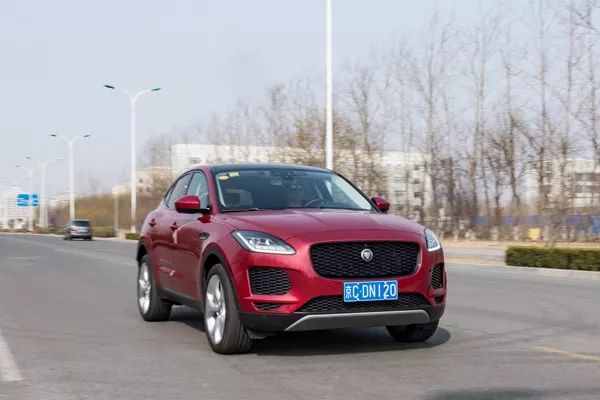Strictly speaking, as the last batch of products before Isuzu exited the passenger car market last time, Isuzu Axiom cannot be regarded as a successful model. From its release in 2001 to its discontinuation in 2004, Isuzu Axiom has not even experienced The small facelift went into history. However, from another point of view, the birth of Haval CUV and the subsequent emergence of Haval H3 and Haval H5 can be regarded as another form of existence of Isuzu Axiom.

Therefore, everything must be viewed from two sides. Next, let’s talk about the history of this Isuzu Axiom in detail.

The Isuzu Axiom launched in 2001 was a model that Isuzu had high hopes for at that time. From the perspective of market positioning, Isuzu originally planned to use this Axiom as the successor of Isuzu Trooper to the North American market and to Toyota. Highlander challenged. However, this car has chosen the wrong direction from the very beginning. The Isuzu Axiom, which is based on the non-load-bearing body platform of the Isuzu Athlete, does not have the potential to be completely biased towards passenger cars. On the contrary, in its view Under the already urban shape, it still retains a very strong off-road passing performance.


So, the unintentional result is that this Isuzu Axiom is very popular with off-road vehicle enthusiasts. Similarly, the Haval H5 series, which has a certain origin with it, has also attracted a large number of off-road vehicle fans. This is something.


Another reason why Isuzu Axiom is not recognized by the North American market is its shape. It is said that the North American market did not recognize the image of Isuzu Axiom when the new car was launched. The design concept of the Ninja Knife makes Isuzu Axiom look different from the traditional SUV. Obviously, this car will be more slender. Under the action of the non-load-bearing body, the visual height of the whole vehicle will also be higher. Therefore, under such a styling style, Isuzu Axiom is completely different from the heavy feeling emphasized by traditional hard-core SUVs.


The three-dimensional size can well illustrate this problem. The body length of the Isuzu Axiom is 4638 mm, the body width is 1796 mm, the body height is 1707 mm, and the wheelbase is 2703 mm. These four sets of data all emphasize the tall and slender image of this car.

Although this design is not outdated now. The idea of emphasizing and refining the dynamics of hard-core off-road vehicles by creating a sense of slenderness and lightness is quite advanced. In my impression, this type of non-load-bearing SUV, especially the non-load-bearing SUV built on the basis of a commercial truck platform, can achieve proportion coordination and smooth transition like the Isuzu Axiom. Really not much.

From the perspective of details, Isuzu Axiom also runs through the image of a ninja, especially the design of the front face is very interesting. The headlights appear as the only visual center of gravity of the front face. In addition, the front face of the whole car has no more features that can be used as the focus of the visual center of gravity. The size of the air intake grille is compressed as much as possible, while the front bumper mask is divided by uniform geometric texture, and there is no possibility of the visual center of gravity moving down. This way of handling is indeed very similar to the ninja who covers his face in traditional Japanese anime images. Especially low-end models that are not equipped with fog lights.

The detailed design of the rear of the vehicle is also shown in a simple image, with single taillights arranged on both sides of the D-pillar. The models launched later also added chrome-plated bright strips to connect the taillights on both sides, and under the design of the sunken roof line and large departure angle, the entire tail has no sense of procrastination. In my personal opinion, the pillar-style taillights improved on the basis of the later Haval CUV better extract the lightness of the tail.

Inside the vehicle, the design of Isuzu Axiom also continues the idea of Isuzu manufacturing commercial vehicles or hard-core off-road vehicles. in. The control panel on the center console is laid out in a layered manner, and a monochrome liquid crystal display panel is also prepared. In terms of color matching, Isuzu has also launched a two-color color matching composed of beige and black to enhance the sense of luxury.

Under the action of the non-load-bearing body, the sitting posture of the Isuzu Axiom also continues the characteristics of this type of vehicle, and the relative height of the seat cushion from the floor is low. This is naturally unable to compete with the first-generation Highlander built on the Camry platform at that time in terms of comfort.


Insufficient model series is another reason why Isuzu Axiom is cold in the market. In its short life cycle, Isuzu Axiom has only provided two configuration models, the basic version and the XS. Compared with the basic version, the XS model has added fog Lights, sunroof, heated front seats, automatic anti-dazzle interior rearview mirror with HomeLink function, 12-speaker audio, and leather interiors are such comfort features.

In terms of power, the configuration of the Isuzu Axiom is also quite good. The model launched at the initial stage is equipped with a 3.5L V6 engine internally code-named 6VE1, which is matched with a GM four-speed automatic transmission. In 2004, when the life cycle of Isuzu Axiom reached the end, a 6VE1-DI 3.5L V6 direct injection engine was added, which was matched with a four-speed automatic transmission from Aisin Seiki . The maximum output power has been increased from 172 kW to 186 kW. And the new model launched this time can be considered as the only modification of Isuzu Axiom, adding the air intake grille and the chrome-plated bright strip at the rear of the vehicle.

However, this facelift did not last long. In July 2004, the Isuzu Axiom was officially discontinued, and its engineering was also used to produce the Subaru Chippen. With the discontinuation of Isuzu Rodeo and Axiom, Isuzu has gradually withdrawn from the passenger car field. By around 2009, Isuzu’s passenger cars will only have a few rebranded models under the general framework.



In the short life cycle of Isuzu Axiom, Isuzu also launched two more playful concept cars based on Axiom in 2002, one is the convertible version of the Axiom XSR concept car, and the other is the pickup version of the Axiom XST concept car. Looking back, the Axiom XSF concept car is also an urbanization attempt to increase the envelopment.





However, the story of the Isuzu Axiom did not end here, and the subsequent Haval CUV and Isuzu Axiom did have a high blood relationship. With a more reasonable positioning, the Haval CUV later became the originator of the Haval brand.




